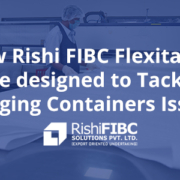Why Flexitanks for Transporting Liquids?
Since time immemorial, tank containers were the sole and primary means for transportation of cargos of liquid throughout the world. But in recent times, the discovery of flexitanks have added an indescribable advantage in the liquid transportation industry. Flexitanks are the flexible bags that are collapsible and specially designed to be fitted inside freight containers of 20 foot. Flexitanks have added an extra advantage in the transportation. Transportation can be done in bulks and thus, have curtailed the high cost of transportation. Flexitanks can not only transport various kinds of liquids but also food stuffs as well as ink, emulsifiers and other non-hazardous and non-inflammable commodities. However, it is best used for the transportation of non-hazardous liquids like juice, ink, oil and fats etc.
Flexitanks are available in myriad shapes and sizes and can be used as per the requirement. It can increase the volume of a particular tank. Suppose, a normal container whose capacity is 20,000 litres can hold 24,000 bottles of wine, on the other hand, a flexitank can hold as much as 32,000 bottles of wine with a capacity of 20,000 litres. Liquids can be transported in bulk.
Read more: Flexitanks a Better Alternate to ISO Tank Containers and Drums
Containers, that has been used for the transportation of liquids till now had to be transported and shipped after it has been used. It had to be cleaned and maintained properly. Hygiene has to be maintained since it involves transportation of food and liquids that are edible. Such procedures were long and also involved a lot of money. On the other hand, flexitanks can be easily shipped and transported in a 20-foot container anywhere without any hassle.
Red more: Flexitanks A Complete Fluid Transportation Solution
Liquids that are transported have to be loaded in a container before the transportation and after it reaches its destination, it has to be unloaded again. This involves a lot of time and labour. People have to be paid those who were involved in the process of loading. But it is not the same in case of flexitanks. Liquids can be easily loaded in these tanks without much labour and it can be done within a short interval of time. Thus, both time and money can be saved by using the flexitanks.
An ISO Tank is more expensive in comparison to the Flexitanks. Flexitanks are more advantageous since it can be easily manufactured, used and cleaned and can be utilised for the next endeavour. However, these are meant for one-time transportation of liquids, yet they can be easily recycled and reused. Liquids remain secured and protected inside a flexitank. A flexitank is placed inside a container tank. Therefore, it reduces the risk of leakage and spills during transportation. With all these advantages, flexitanks have set ideal standards for the transportation of liquids throughout the world.
Get in touch with us call: +91 8221-229400










